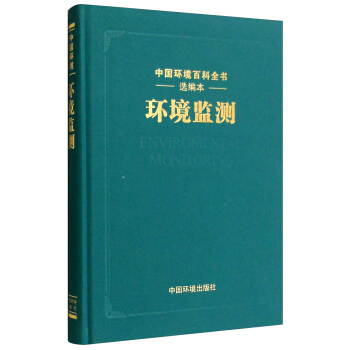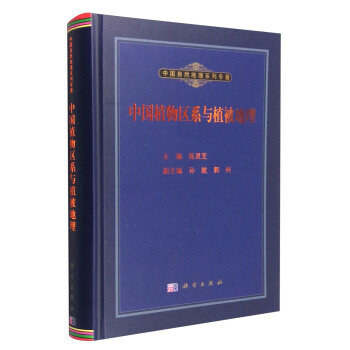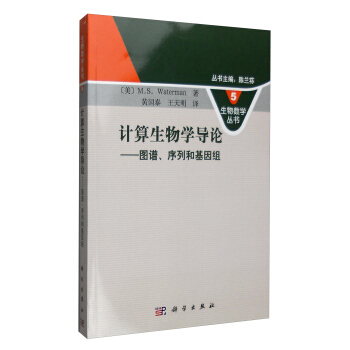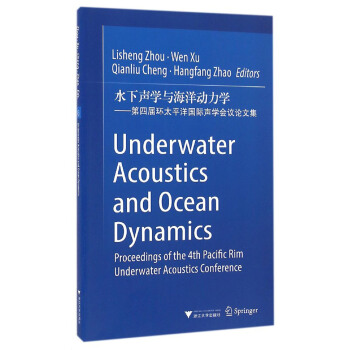

具体描述
编辑推荐
《太阳系物理与化学(第二版)(英文影印版)》是引进自爱思唯尔出版集团的学术专著。地球只有一个,太阳系也只有一个。我们在探索这个世界时,首先要探索的就是我们的太阳系。这本书内容非常丰富,而且图文并茂,非常适合阅读。这一领域的研究者不能错过这本佳作。内容简介
《太阳系物理与化学(第二版)(英文影印版)》全面介绍了太阳系的行星物理学和物理化学,覆盖了当前这些领域的研究以及受益于地面和空间实验的行星科学。这些实验构成了这本巧妙融合了归纳和阐释的参考书的基础。本书在详细讨论大行星的同时,对小行星、彗星,已经其他小天体也都作了讨论。本书可作为天文学家、物理学家和行星科学家的参考书,也可以用作他们授课的教材。作者简介
(美) 刘易斯 (J. S. Lewis),美国亚利桑那大学教授。目录
Foreword xiI Introduction
Nature and Scope of Planetary Science 1
Guide to the Literature 3
Numbers in Science 4
Dimensions and Units 5
Exercises 6
II Astronomical Perspective
Introduction 7
Distance Scales in the Universe 7
The Big Bang 10
Limitations on Big Bang Nucleosynthesis 14
Galaxy and Star Formation 15
Structure and Classification of Galaxies 16
Classification of Stars 18
Stellar Evolution 25
Star Clusters 27
Stellar Origins 29
Outline of Star Formation 33
Stellar Explosions and Nucleosynthesis 34
Nuclear Cosmochronology 43
Exercises 47
III General Description of
the Solar System
Introduction 50
The Sun 50
Orbits of the Planets 52
Changes in Orbital Motion 57
Properties of the Planets 58
Mass and Angular Momentum Distribution 59
Satellites 63
Asteroids 69
Comets 71
Meteors 72
Meteorites 72
Cosmic Dust 73
Cosmic Rays 73
Planetary Science in the Space Age 74
vii
Summary 76
Exercises 76
IV The Sun and the Solar Nebula
Introduction 77
Energy Production in the Sun 77
Energy Transport in the Sun 79
Internal Structure of the Sun 83
Surface of the Sun 84
The Chromosphere 87
The Corona 88
Discovery of the Solar Wind 90
Radio Wave Propagation in Space Plasmas 91
The Solar Wind 92
Chemistry of Solar Material 96
Ionization 97
Dissociation and Molecule Formation 100
Hydrogen and the Rare Gases 101
Oxygen, Carbon, and Nitrogen 102
Magnesium and Silicon 105
Iron 106
Sulfur 107
Aluminum and Calcium 108
Sodium and Potassium 109
Nickel and Cobalt 110
Phosphorus and the Halogens 111
Geochemical Classification of the Elements 111
The Chemistry of Rapid Accretion 116
Kinetic Inhibition 117
Mass and Density of the Solar Nebula 118
Thermal Opacity in the Solar Nebula 121
Dust Opacity 129
Thermal Structure of the Nebula 131
Turbulence and Dust Sedimentation 134
Accretion of Rocks, Planetesimals,
and Planets 136
Gas Capture from the Solar Nebula 138
The T Tauri Phase 141
Thermal History of the Early Solar System 143
Exercises 144
V The Major Planets
Introduction 147
Interiors of Jupiter and Saturn: Data 148
Isothermal Interior Models of Jupiter
and Saturn 151
Thermal Models of Jupiter and Saturn 154
The Atmospheres of Jupiter and Saturn:
Observed Composition 156
Tropospheric Composition and Structure:
Theory 159
Cloud Condensation in the NH3–H2O–H2S
System 165
Cloud Physics on the Jovian Planets 174
Galileo Perspectives on Jovian Clouds 179
Ion Production in the Jovian Atmosphere 180
Visible and Infrared Radiative Transfer 183
Horizontal Structure and
Atmospheric Circulation 187
Photochemistry and Aeronomy 200
The Jovian Thermosphere 217
Radiophysics and Magnetospheres of Jupiter
and Saturn 218
The Interiors of Uranus and Neptune 229
Atmospheres of Uranus and Neptune 238
Perspectives 247
Exercises 247
VI Pluto and the Icy Satellites of
the Outer Planets
Introduction 252
Surfaces of Icy Satellites 253
Eclipse Radiometry 256
Surface Temperatures 257
Surface Morphology of the Galilean
Satellites 258
Density and Composition of Icy Satellites 265
Internal Thermal Structure of Galilean
Satellites 267
Dynamical Interactions of the Galilean
Satellites 272
Thermal and Tectonic Evolution of Icy
Satellites 275
Minor Satellites of Jupiter 278
Planetary Rings 280
Titan 289
The Intermediate-Sized Saturnian Satellites 293
Minor Satellites of Saturn 296
Satellites of Uranus 299
Satellites of Neptune 303
The Pluto–Charon System 308
The Neptune–Pluto Resonance 311
Spacecraft Exploration 311
Exercises 312
VII Comets and Meteors
Historical Perspectives 317
Nature and Nomenclature of Comets 319
Cometary Orbits 321
Heating by Passing Stars 325
Evaporation and Nongravitational Forces 326
The Nucleus and Coma of P/Halley 328
Chemistry and Photochemistry of Water 328
Further Chemical Processes in the Coma
and Tail 332
Behavior of Small Particles 333
Dynamical Behavior of Dust in Space 334
Meteors 336
Cometary Fireballs 343
Cometary Impacts on Jupiter 344
Exercises 347
VIII Meteorites and Asteroids
Introduction 350
Introduction to Meteorites 350
Meteorite Orbits 353
Phenomena of Fall 355
Physical Properties of Meteorites 358
Meteorite Minerals 362
Taxonomy and Composition of Chondrites 362
Metamorphic Grades of Chondrites 367
Taxonomy and Composition of Achondrites 369
Taxonomy and Composition of Stony-Irons 371
Taxonomy and Composition of Irons 372
Isotopic Composition of Meteorites 375
Genetic Relationships between Meteorite
Classes 382
Introduction to Asteroids 384
Asteroid Orbits 386
Stability of Trojan and Plutino Orbits 389
Sizes, Shapes, and Albedos of Asteroids 391
Masses and Densities of Asteroids 393
Photometry and Spectroscopy of Asteroids 394
Thermal Evolution of Asteroids 401
Dynamical Evolution of the Asteroid Belt 406
Centaurs and Trans-Neptunian Objects 409
Relationships among Asteroids, Meteorites,
and Comets 412
Radar Observations of Near-Earth Asteroids 415
Asteroid Resources 416
Exercises 419
IX The Airless Rocky Bodies: Io,
Phobos, Deimos, the Moon, and Mercury
Introduction 424
Orbits and Physical Structure of Phobos
and Deimos 426
Io: General Properties 430
Io: Surface Processes 430
Io: Internal Energy Sources 432
Io: Geology 433
Io: Atmospheric and Volcanic Gases 435
Io: Escape and the Plasma Torus 437
Io: Genetic Relationships 438
Impact Cratering 438
Motions of the Moon 443
Physical Properties of the Moon 445
Elemental Composition of the Moon’s
Surface 445
Lunar Rock Types 447
Lunar Minerals 449
Lunar Elemental Abundance Patterns 451
Geology of the Moon 451
Geophysics of the Moon 452
History of the Earth–Moon System 456
Origin and Internal Evolution of the Moon 458
Solar Wind Interaction with the Moon
and Mercury 460
The Planet Mercury 461
Motions of Mercury 461
Composition and Structure of Mercury 462
Noncrater Geology of Mercury 463
Geophysics of Mercury 463
Atmospheres of Mercury and the Moon 468
Polar Deposits on Mercury and the Moon 469
Unfinished Business 472
Exercises 474
X The Terrestrial Planets: Mars,
Venus, and Earth
Introduction 477
Mars 478
Motions of Mars 479
Density and Figure of Mars 479
Geophysical Data on Mars 481
Gravity and Tectonics of Mars 483
Geology of Mars 483
Surface Composition 496
Viking Lander Investigations 503
The Shergottite, Nakhlite, and
Chassignite Meteorites 505
Atmospheric Structure 508
Atmospheric Circulation 509
Atmospheric Composition 510
Photochemical Stability and
Atmospheric Escape 513
Explosive Blowoff 519
Origin and Evolution of the Atmosphere 519
Organic Matter and the Origin of Life 522
Venus 524
Motions and Dynamics of Venus 526
Geophysical Data on Venus 526
Geology of Venus 528
Venus: Atmospheric Structure and
Motions 534
Venus: Atmospheric Composition 537
Venus: Atmosphere–Lithosphere
Interactions 539
Venus: Photochemistry and Aeronomy 543
Venus: Atmospheric Escape 547
Venus: Planetary Evolution 549
Earth 550
Earth: Motions 551
Earth: Internal Structure 552
Earth: Magnetic Field and Magnetosphere 554
Earth: Surface Geology 554
Earth: Early Geological History 557
Earth: Biological History 559
Earth: Geochemistry and Petrology 563
Weathering in the Rock Cycle 566
Earth: Atmospheric Composition
and Cycles 568
Radiocarbon Dating 573
Stable Isotope Climate Records 574
Photochemistry and Aeronomy 575
Escape and Infall 575
Climate History, Polar Ice, and Ice Ages 579
Life: Origins 582
Life: Stability of the Biosphere 587
Exercises 588
XI Planets and Life around
Other Stars
Chemical and Physical Prerequisites of Life 592
The Planetary Environment 595
The Stellar Environment 597
Brown Dwarfs 600
The Search for Planets of Other Stars 603
The Search for Extraterrestrial Intelligence 606
Exercises 608
XII Future Prospects
Mercury 611
Venus 612
Earth’s Moon 612
Mars 613
Asteroids 614
Jupiter 615
Saturn, Uranus, and Neptune 615
Pluto 615
Comets 616
Beyond the Solar System 616
Appendix I: Equilibrium
Thermodynamics 621
Heat and Work 621
Adiabatic Processes and Entropy 622
Useful Work and the Gibbs Free Energy 623
Chemical Equilibrium 623
Exact and Complete Differentials 624
The Maxwell Relations 625
Appendix II: Absorption and
Emission of Radiation by
Quantum Oscillators 626
Appendix III: Exploration of the
Solar System 629
Appendix IV: Basic Physical
Constants 634
Appendix V: Gravity Fields 635
Suggested Readings
Introduction 637
Chapter I–Introduction 637
Chapter II–Astronomical Perspective 637
Chapter III–General Description of the
Solar System 638
Chapter IV–The Sun and the Solar Nebula 638
Chapter V–The Major Planets 638
Chapter VI–Pluto and the Icy Satellites of the
Outer Planets 639
Chapter VII–Comets and Meteors 639
Chapter VIII–Meteorites and Asteroids 639
Chapter IX–The Airless Rocky Bodies: Io, Phobos,
Deimos, the Moon, and Mercury 640
Chapter X–The Terrestrial Planets: Mars, Venus,
and Earth 640
Chapter XI–Planets and Life
around Other Stars 641
Chapter XII–Future Prospects 642
Index 643
前言/序言
用户评价
读这本书的感觉就像是在进行一场精密的科学探险,每一章都像是一个新发现的地形图,充满了未知与惊喜。《太阳系物理与化学(第二版)(英文影印版)》之所以让我如此着迷,是因为它将宏观的宇宙景象与微观的化学反应巧妙地结合在一起。我过去总是将行星视为独立的个体,但这本书让我看到了它们之间错综复杂的联系。例如,书中关于早期太阳系化学演化的部分,详细描述了不同元素在原行星盘中的分布和迁移,以及它们如何结合形成各种矿物和化合物。我特别对关于彗星和小行星的化学组成及其对地球生命起源可能性的探讨部分印象深刻,这让我意识到,我们所处的地球,其物质来源或许就隐藏在那些看似不起眼的星际尘埃和冰粒之中。作者在引用和论证时,极其注重科学证据的严谨性,并且经常引用最新的观测数据和实验结果,这使得书中的内容充满了时代感和前沿性。对于我这样希望了解太阳系“物质基础”和“生命起源”根源的读者来说,这本书无疑提供了一个详实而令人信服的视角,它将理论与实践紧密地联系起来,让我对宇宙的构成有了更深刻的体悟。
评分我是一位对天文学有浓厚兴趣的业余爱好者,也尝试过阅读不少相关的书籍,但大多数往往停留在现象的描述,对于“为什么”的追问总是不够深入。这本书的出现,彻底改变了我的阅读体验。《太阳系物理与化学(第二版)(英文影印版)》给我最大的惊喜在于,它不仅仅是在讲述太阳系的故事,更是在教授如何“思考”太阳系。它引入了大量的物理学概念,比如等离子体物理、辐射传输、磁流体动力学等,这些都是理解太阳系行星和恒星行为的关键。我尤其对关于太阳活动对行星磁层影响的章节印象深刻,书中详细阐述了太阳风如何与行星磁场相互作用,产生壮丽的极光现象,同时也可能对卫星和航天器产生威胁。作者在解释这些复杂概念时,并非直接给出结论,而是引导读者一步步推导,通过清晰的图表和公式,将抽象的理论具象化。这让我感觉自己不再是被动接受知识,而是主动参与到知识构建的过程中。虽然这本书的专业性很强,需要一些基础物理和化学知识作为支撑,但我认为对于真正想要深入了解太阳系的人来说,这绝对是一笔宝贵的财富,它赋予了我一种分析和理解宇宙现象的新视角。
评分从科学文献的角度来看,这本书绝对是一部里程碑式的作品。《太阳系物理与化学(第二版)(英文影印版)》为我提供了一个极其详尽的太阳系研究框架。它不仅仅是关于太阳系的“是什么”,更是关于“为什么会这样”的深度解析。我特别喜欢书中关于行星磁场生成机制和演化的章节,它结合了地质学、物理学和化学等多学科的知识,深入浅出地解释了发电机效应是如何在行星内部运作的,以及磁场如何保护行星免受太阳风的侵蚀。作者的叙述风格极其清晰,逻辑性极强,即使在讨论最复杂的物理化学过程时,也能保持条理分明。我还会经常回顾书中关于各个行星形成和演化历史的章节,它将我们目前掌握的证据和理论进行梳理,并指出其中存在的未解之谜,这激发了我对未来研究方向的思考。这本书的英文影印版,其严谨的学术翻译和高质量的插图,都极大地提升了阅读体验。对我这样希望对太阳系有一个全面、深入、并且具有前瞻性理解的读者而言,这本书无疑是不可多得的宝藏,它将基础理论与前沿研究有机结合,为我打开了通往更广阔科学世界的大门。
评分这本书简直是为我量身定做的!我一直对宇宙的形成和演化过程有着强烈的好奇心,但又觉得很多科普读物都过于浅显,难以满足我深入了解的渴望。直到我翻开《太阳系物理与化学(第二版)(英文影印版)》,我才找到了那种“教科书般”的严谨和深度。它不仅仅是列举行星的组成成分,而是从物理学的基本原理出发,结合化学反应和过程,层层剥茧地揭示了太阳系的诞生之谜。比如,书中关于星云假说的一章,我花了整整一个下午来消化,它详细讲解了引力塌缩、角动量守恒以及原行星盘的形成机制,还通过精妙的数学模型来验证这些理论。我特别欣赏它对于不同类型天体(如岩石行星、气态巨行星、矮行星)形成过程中所经历的独特物理和化学过程的细致区分,这让我对太阳系的多样性有了更深层次的理解。而且,英文影印版保留了原文的学术严谨性,让我能够接触到最前沿的研究成果和表述方式,虽然阅读过程有些挑战,但每一次的“豁然开朗”都带来了巨大的满足感。我真的感觉自己不仅仅是在阅读一本书,而是在与宇宙的奥秘进行一场深入的对话。
评分我一直以为自己对太阳系的了解已经 cukup 了,但这本书像一个无情的“现实检验”,彻底颠覆了我的认知。《太阳系物理与化学(第二版)(英文影印版)》并非一本轻松易读的书,它更像是一本需要静下心来、反复揣摩的学术专著。书中对于行星大气层的形成和演化过程的分析,让我叹为观止。它不仅仅是描述大气层的组成,更深入地探讨了光化学反应、对流、辐射平衡等物理化学过程如何塑造了不同行星迥异的大气环境。例如,在解释金星为何拥有如此浓密且炽热的大气时,书中详细阐述了失控的温室效应是如何发生的,并结合了其早期地质活动和水分蒸发的化学过程。我尤其欣赏它对不同探测器任务所得数据的引用和分析,这使得书中的论述更具说服力,也让我能够了解到人类探索太阳系的最新进展。这本书对细节的关注达到了令人发指的程度,从微小的尘埃颗粒的物理性质,到宏大的行星轨道动力学,无一不被涵盖。对我来说,这是一次挑战,更是一次蜕变,让我能够以更科学、更系统的方式来理解我们所在的太阳系。
相关图书
本站所有内容均为互联网搜索引擎提供的公开搜索信息,本站不存储任何数据与内容,任何内容与数据均与本站无关,如有需要请联系相关搜索引擎包括但不限于百度,google,bing,sogou 等
© 2025 book.idnshop.cc All Rights Reserved. 静思书屋 版权所有


![科技创新辞典 [A Dictionary of Science and Technology Innovation] pdf epub mobi 电子书 下载](https://pic.tinynews.org/11644989/54dbf448N03c37483.jpg)
![运筹与管理科学丛书24:A First Course in Graph Theory(图论基础教程) [A First Course in Graph Theory] pdf epub mobi 电子书 下载](https://pic.tinynews.org/11675096/552e2682N5a91153d.jpg)








![从高维Pythagoras定理谈起:单形论漫谈 [Discussion from the Multidimensional of Pythagoras Teherem:The Theory of Simplex Rambling] pdf epub mobi 电子书 下载](https://pic.tinynews.org/12026995/58774a5eNf8ed2f10.jpg)
![气-水两相流传热传质及其应用研究 [Research on Heat and Mass Transfer of Gas-water Two-phase Flow and Their Applications] pdf epub mobi 电子书 下载](https://pic.tinynews.org/12061629/58e6f5acNad032397.jpg)

![Buffon投针问题 [Buffon Needle Problem] pdf epub mobi 电子书 下载](https://pic.tinynews.org/12096434/58774a61Nc8dc37a2.jpg)
![典型环境新POPs物质生态风险评估方法与应用 [Typical Environment Ecological Risk Assessment Approach of New POPs Chemicals] pdf epub mobi 电子书 下载](https://pic.tinynews.org/12111474/589bdac5Na77968c0.jpg)


![延续生命:生物多样性与人类健康 [Sustaining Life:How Human Health Depends on Biodiversity] pdf epub mobi 电子书 下载](https://pic.tinynews.org/12165800/58e6f5acNb4e2f5f1.jpg)
